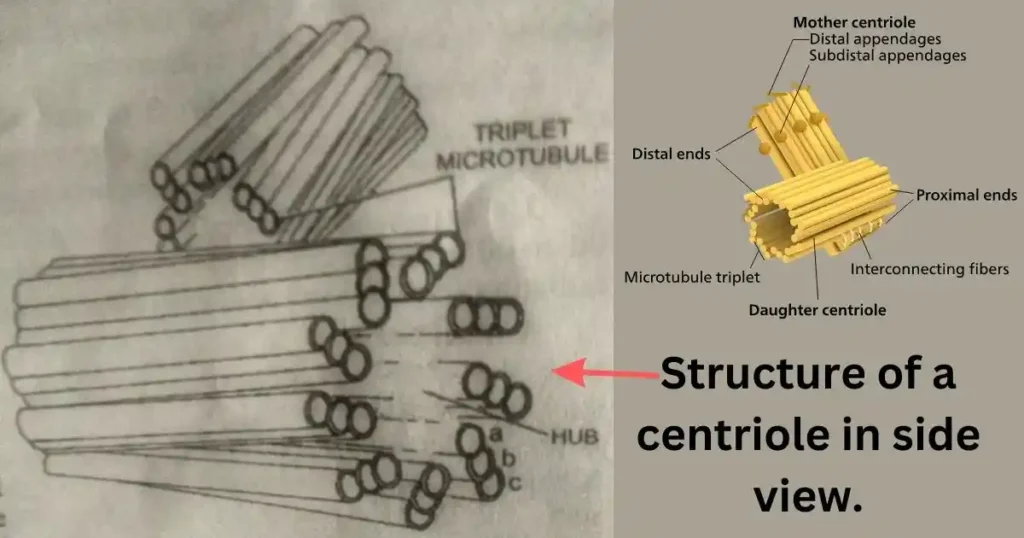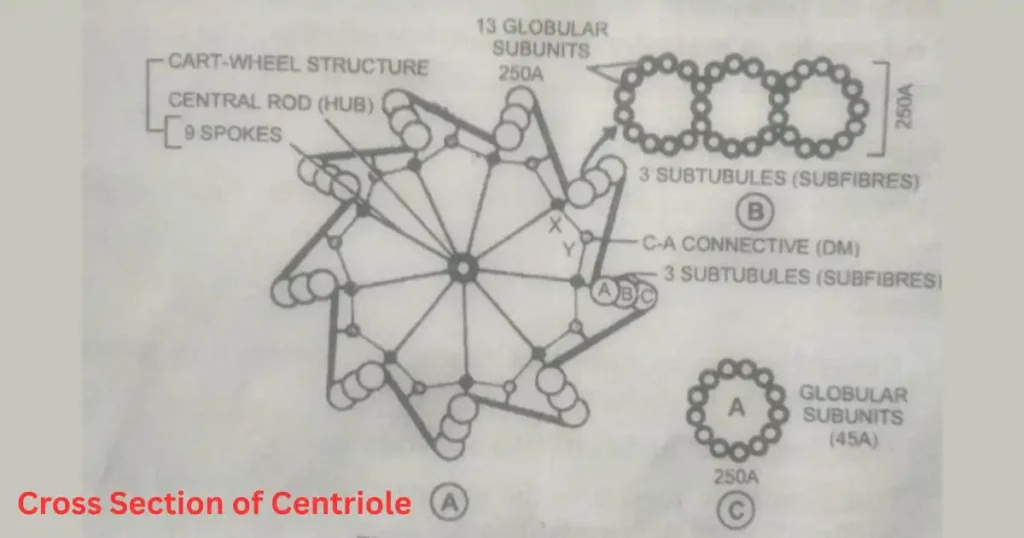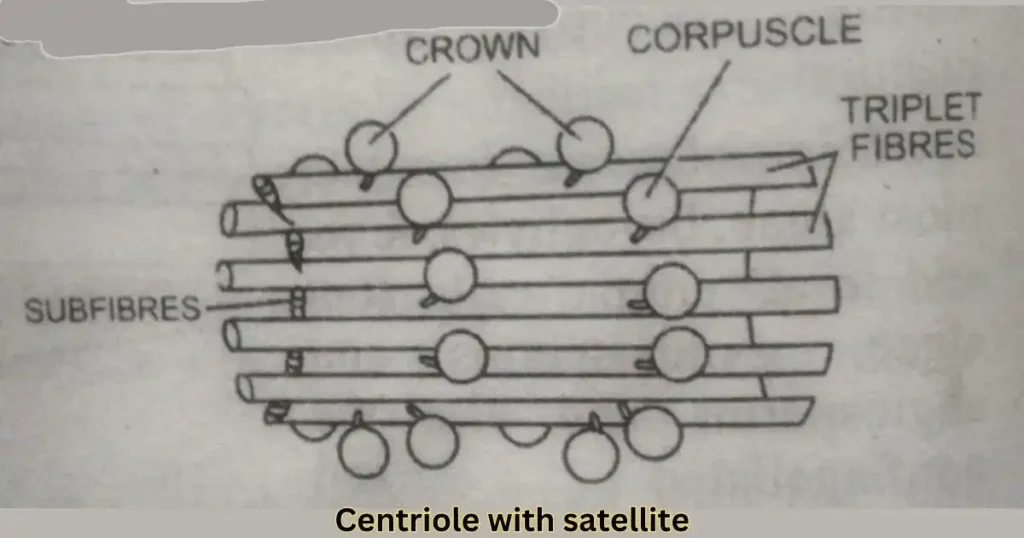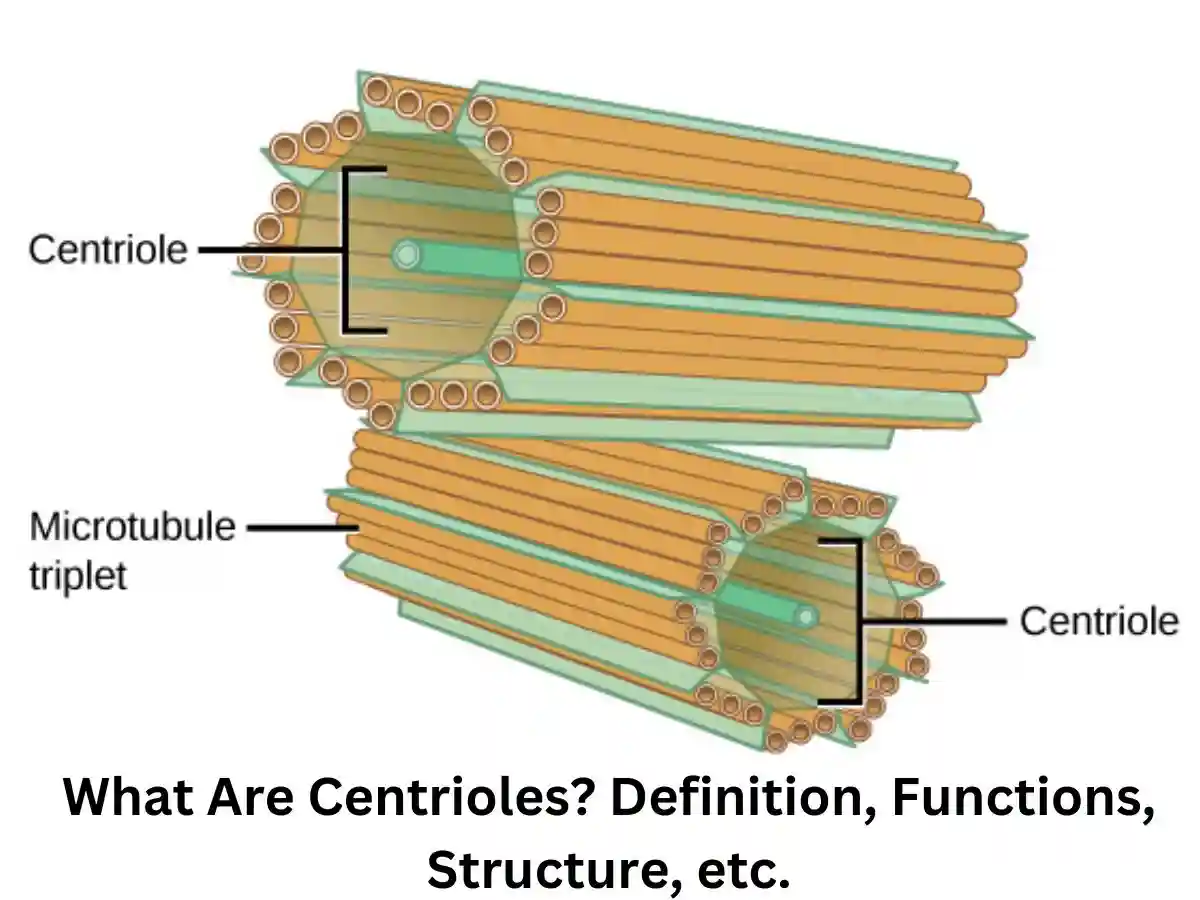Hello, guys, In this article we are to study about Centrioles. Like – what are centrioles? What is its structure, functions, Composition, etc. We will know the answers to many such questions today, so let’s start.
What are centrioles?
In the cell, two spindle shaped or cylindrical structures are found near the nucleus which are called Centriole and the two centrioles together are called Centrosome. These are situated at right angles to each other. The centrosomes are surrounded by centrosphere. The hyaline cytoplasm surrounding the centrosome is called centroplasm.

Centrioles are mostly found in bryophytes, algae, ferns as well as all animal cells. Centrioles are not found in gymnosperms, red algae and angiosperms, as well as in protozoa without flagella and without cilia.
It is help in cell division, let us know how they do it. When cell division occurs, they form fibers and those fibers are called spindle fibers. Now it comes to the question that plant cells also do cell division and centromere is not found in them, then how do they do cell division.
Who discovered centriole?
The centroid or centrosome was discovered by two scientists Bendem and Boveri. Centrioles are membraneless structures.
Centriole is not found in which cells?
Centrioles are not found in nerve cells, mature RBCs, ovum cells and plant cells.
Plant cells have a structure like these called polar cap which forms fibers and these fibers help in cell division.
Centrioles Structure –
As far as the structure of centriole is concerned, it is the same in all cells. Its size ranges from 150 to 250 nm (1500–2500 Å) in diameter and 3000–20000 Å in length.

A centriole is a membraneless structure and is made up of microtubules. These microtubules are located at equal distances around the center in the form of a circle.
If we talk about its arrangement, its arrangement is 9+0. Now see what is 9+0. 9+0 means that 9 micro tubes will be found at the periphery and no micro tubes will be found in the centre. So what will we call this 9 + 0 arrangement. Now, when it comes to whether the 9 micro tubes on the periphery are doublet or triplet, then the micro tubes present here are triplets.
Triplets means the microscopic tubes are in groups of three. The structure of the centrioles formed in this way is similar to the cartwheel structure.
Now the question comes whether these three are interconnected. Yes, all three of them are connected to each other and the connecting structure is called bridge. Now the question comes that what happens there when there is no microscopic tube in the middle of the centriole. The center of the centrioles is filled with protein, which is called the hub. The micro tube inside this hub is connected to the radial rod.
1. Microtubules –
The triple microtubules present in the centriole are all the same. Each triplet is made up of 3 subfibre, named A, B and C. The diameter of each subfibre is approximately 250 Å. Subfibre A is tubular, and its wall is made up of 13 globular subunits.
Subfibre B and Subfibre C are C shaped because B shares 3 subunits with Subfibre A and Subfibre C shares 3 subunits with Subfibre B. The diameter of each subunit is approximately 40–45 Å.
2. Linker’s –
The Subfibre A of each triplet is connected to the Subfibre C of the neighboring triplet by a thick substance. But in some cases this connection can be between A–A or C–C subunits.
Associated Structures (Pericentriolar structures) –
Satellites –

Two crowns surround each centriole. Each crown consists of 9 amorphous plates or spheres. These are round structures connected to the centroid by small bridges of dense material. These structures are called corpuscles or massules or pericentriole satellites. The shape, size and position of satellites change during spermatogenesis.
Biochemical Composition –
Centrioles are composed of structural proteins, lipids, tubulin, ATPase, and RNA.
What is the function of Centrioles?
- Centrioles play an important role in cell division by forming spindle.
- These create the basal bodies of cilia and flagella.
- The distal centriole present in sperm forms the axial filament of the flagellate of sperm.
Centrioles vs Centrosome –
Centrosome also called Microcentrum, is the clear zone of cytoplasm surrounding the centriole. A centriole also called a cell center is a cylindrical body formed of 9 microtubules or fibers that are arranged equidistantly in a circle around an imaginary axis. These help in spindle formation during cell division and form basal bodies of cilia and flagella.
Centrosome vs Centromere –
The centromere is the region of the chromosome where sister chromatids remain attached. The chromosome gets attached to the equator of the spindle through the centromere.
Conclusion –
Friends, if you like the information given about what are centrioles, then share it as much as possible and comment.
Thank you so much
